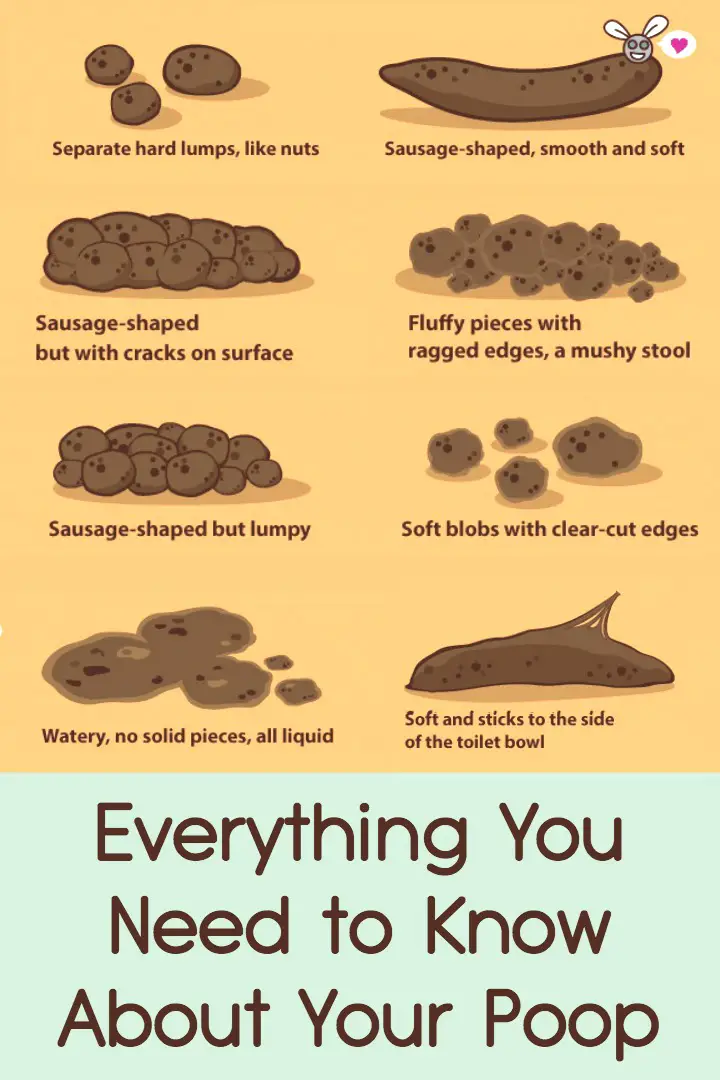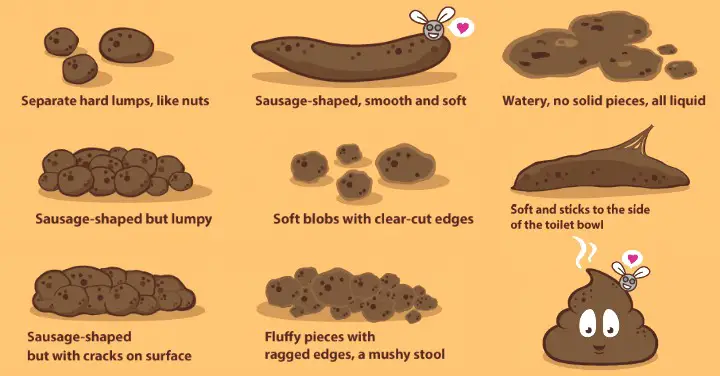Everything You Need to Know About Your Poop
We all poop and the truth is, poop is really really really important!
So what is poop exactly? Poop is the brown blob that we excrete and it is what is left of the food that we have eaten after our bodies have absorbed all the nutrients from it. Poop consists of food, bacteria, mucus and dead cells. Pooping is the natural way our bodies get rid of what it doesn’t need.
In the United States and around the world, many people’s poop is just not good. Adding to the problem is the fact that we live in a day and age where it’s not generally acceptable to mention your bowel activity in polite company. Strangely, even in the doctor/ patient relationship, this subject may be skimmed over with discomfort on everyone’s part in exploring what is really going on.
Thus, many people suffer in silence about their bad digestion. It doesn’t have to be this way though. Everyone deserves to understand that there are visual cues that we can see for ourselves that our intestinal health may, or may not, be at risk in some way.
Learn these important facts about your poop including what it should look like, the frequency of it and the smell also.
Here are 8 different types of poop.
 1. Separate hard lumps
1. Separate hard lumps
If you lack fiber and fluids you could end up with poop that looks almost like nuts, in separated hard lumps. This is an indication of constipation. If your poop is like this, try drinking more water and eating more fruits and vegetables.
2. Sausage-shaped and lumpy
This is also indicative of consiptation. It is not as serious as having separate hard lumps, but it is still not good and indicates a need for more fiber and water in your diet.
3. Sausage-shaped and smooth and soft
If you have sausage-shaped, smooth and soft poop, this is perfect. It is the optimal poop.
4. Soft blobs with clear-cut edges
This is also optimal, especially if you poop more than once per day.
5. Sausage-shaped with cracks on the surface
This is still a normal type of poop but means you might be mildly constipated and should try drinking more water.
6. Fluffy, mushy pieces with ragged edges
This is becoming close to diarrhea and its not necessarily ideal.
7. All liquid with no solid pieces
This type of poop is cause for concern. It is diarrhea. There are many causes of diarrhea ranging from an infection that your body is trying to clear out, so a food intolerance or even disease such as celiac, chrohn’s disease, irritable bowel disease and ulcerative colitis. If you have frequent diarrhea, it is imperative you seek medical advice to figure out why.
8. Sticks to the side of the bowl and is soft
This can indicate too much oil in the poop meaning that your body is not absorbing fats properly. It is cause for further investigation.
The color of your poop.
Brown
Poop is naturally brown because of the bile produced in the liver. Brown is the color poop is supposed to be and is normal.
Black
Black poop could mean you are bleeding internally. It could also be a result of vitamin supplements such as iron. Black poop should be addressed with your physician.
Green
Green poop can mean your food is moving through your large intestine too rapidly. It could also mean you have eaten a lot of green leafy vegetables. Keep an eye on it.
Yellow
Yellow poop, especially if foul-smelling indicates malabsorption of fats in your diet. If it persistent, seek medical advice.
Light-colored
Poop that is light in color could indicate an issue with your bile and seeking medical evaluation is necessary.
Red
Unless you’ve eaten a bunch of tomatoes or other red food, red poop is something you should get advice from a doctor about. It can indicate that there is blood in your poop caused from disease.
More Facts about Poop:
- In a healthy intestine, bowel movements would be a non-event in terms of the person’s experience. Pain or straining signal more than simple discomfort, but may be an indication of impacted stool that has remained in the colon for weeks or may even be an indication of a colo-rectal tumor or other serious condition.
- Eliminated your poop is vital to good health. Pooping more than once per day is ideal.
- If you experience conscious awareness of straining, pain, pressure and of course bleeding, you should contact a physician at once.
- Abnormal stools are any stools that require straining and/or you feel pressure from stools passing through the anal canal.
- Abnormal stools may be small or large size-wise, depending on fiber consumption, and frequency of defecation.
- Normal stools for one person may be abnormal for another. The degree of normality is determined by the anatomy of the anal canal.
- Normal stools require zero effort and zero straining for elimination.
- Normal stools pass through the anal canal without any perception of pressure.
Experts also advise against liberal use of various harsh laxatives, and in some instances, where oversized stools are already occurring, the fiber-based laxatives, designed to create better bulk may exaggerate and aggravate an already present problem with very unfortunate outcomes. Thus it is encouraged to seek improvement through nutrition, drinking greater quantities of water, and with sufficient medical advisement.
